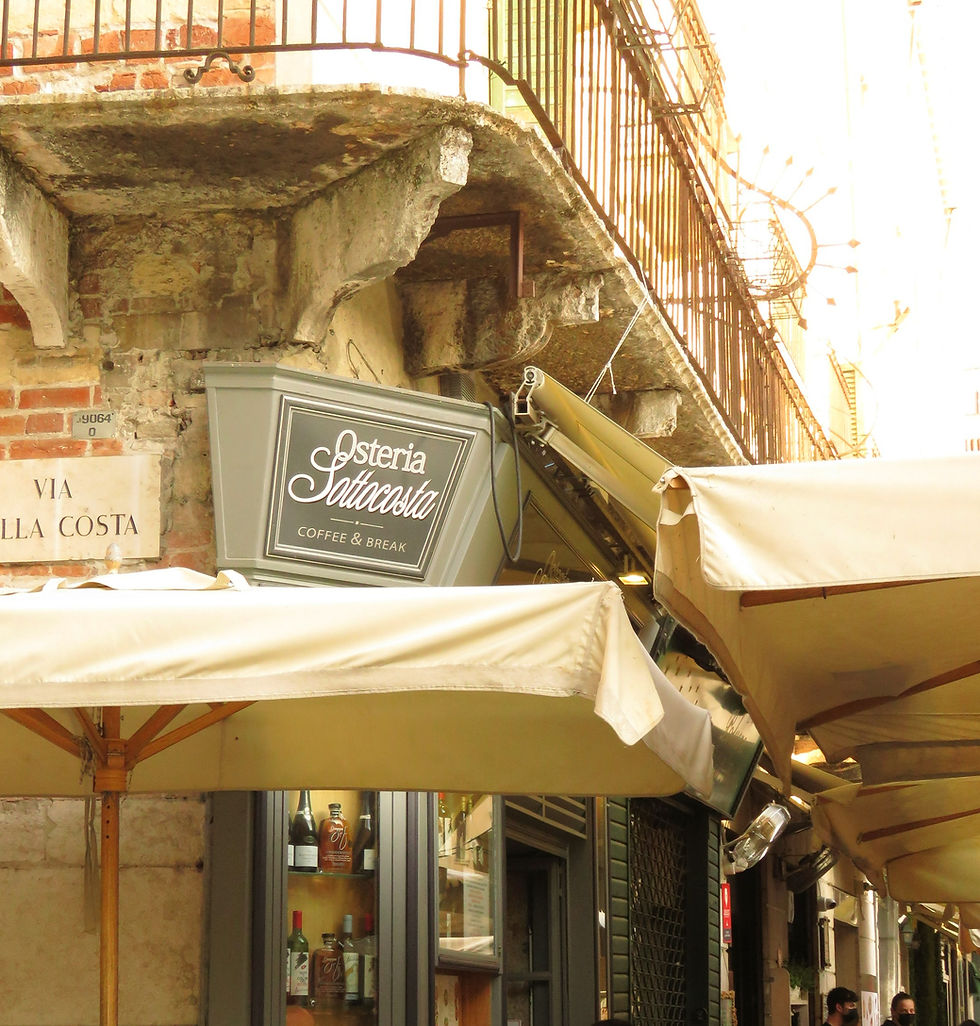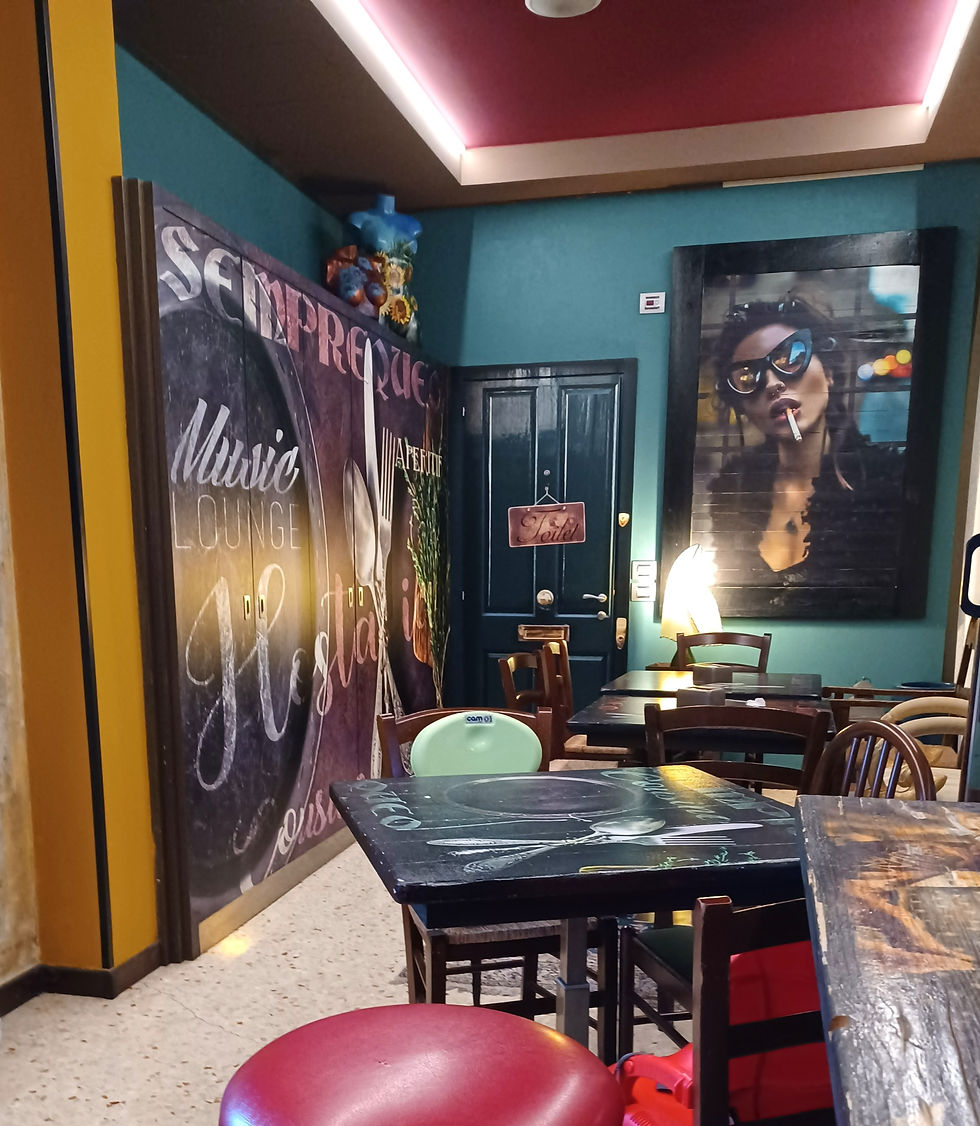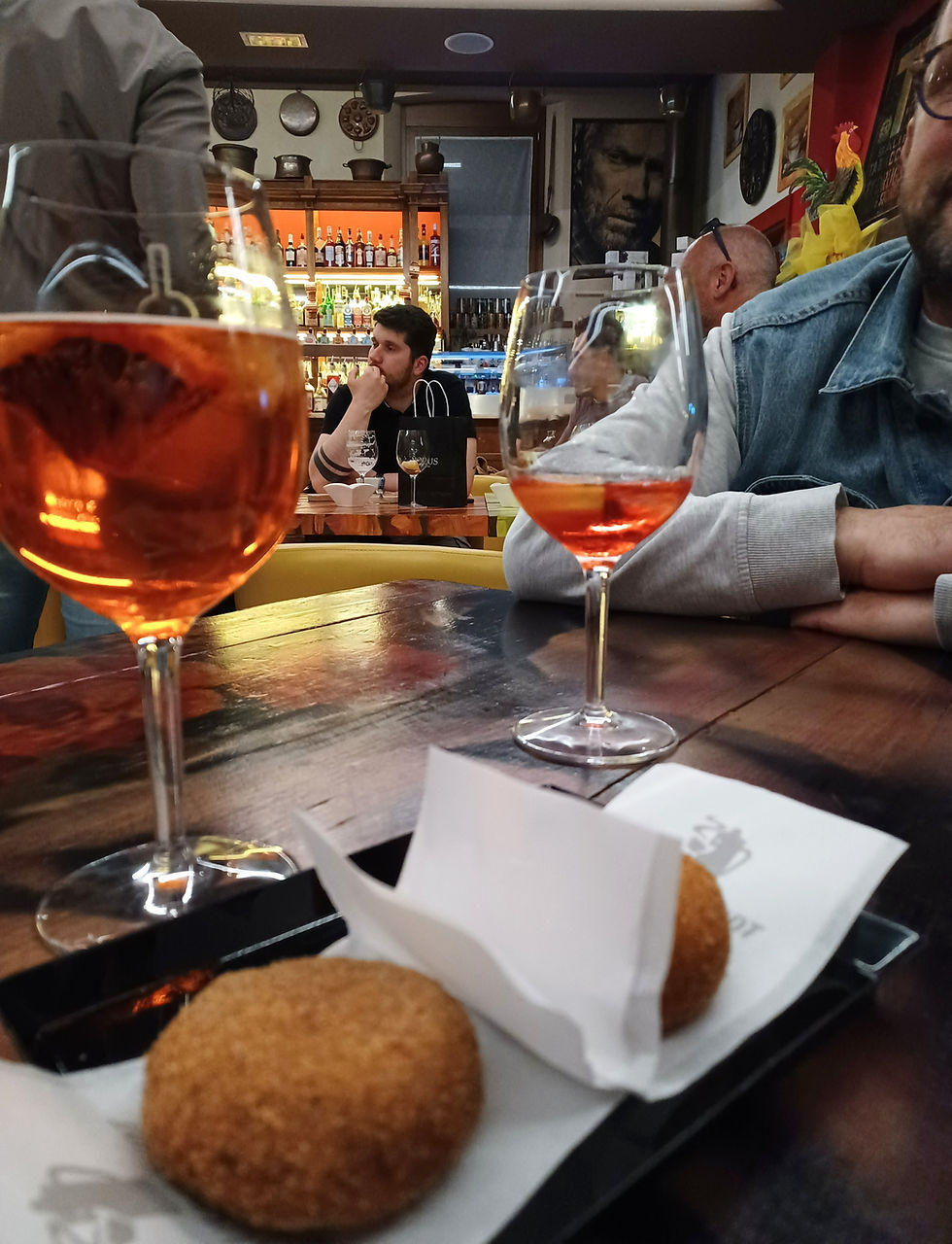L'Osteria - Our Favourites and Why
- Mangia Mangia
- Jun 17, 2022
- 5 min read
Updated: Oct 14, 2024
Neither a bar nor trattoria, an osteria is unmistakeably Italian but what makes it so unique?
Read on for our favourites and why...

This blog post holds a dear place in our hearts because we truly love an osteria. There's something just perfect in the unassuming, rustic feel of a welcoming space with an arty edge and quality of simple but beautiful local foods that brings Italian culture to the table every time.

There's contrast in an osteria, where eclectic art, rude scribblings on the walls or bohemian graffiti is completely acceptable alongside a group of traditional Italian granddads sipping an ombra and playing their card game of scopa. It's a place of no judgement - anything goes, anyone goes and at any time of the day. There are few rules in an osteria, the strictest perhaps entirely related to food.
The word 'Osteria' stems from Host - oste, like gelateria stems from gelato.

Food
Typically, only a couple of dishes make up the menu and these are mostly scribbled onto a chalkboard. They change daily with the seasons, the quality of produce and with the small quantities cooked. An osteria's focus may be food, it may be wines, it may be art or music or a beautiful blend of many things. It goes without saying that an osteria's menu is a showcased selection of local, seasonal offerings made with the utmost pride and care, and often written in local dialect.
In Italy food and wine go hand in hand - do cast your gaze on the extensive wine lists (also scribbled on the board and sometimes much longer than the food menu). Italians study English at school so you can feel free to ask about the dishes and wines because most people welcome the chance to practice their 'speaking' and a chance to show-off their beautiful regional produce.

Drinks
Local wines are the main contenders here, sold by the glass (un calice) or by the bottle or jug. There's no measuring in Italy, at least not where wine is concerned, it flows like water, which isn't measured either. It's roughly a litre (un litro), half a litre (un mezzo litro) or a quarter of a litre (un quarto di litro) but happily use your hands to show how much you're choosing. One litre sounds like a lot of wine, however local wines are usually simple wines, table wines, made to be drunken in abundance with your meal, you'll see, you too will be ordering un'altro litro per favore before you know it.
Other drinks do exist in an osteria; beer, for example, is lovely and crisp and cold (think pils). It's sold by glass - una birretta (330ml) or una birra grande (500ml). If you're looking for a variety of beers and lagers, you're in the wrong place, rather try a birreria. Aperitivi before dinner and lunch are popular in the osteria, on your way home or out for a meal, these are usually in the form of a Spritz or an Ugo or an 'ombra' - a small tumbler of wine.
Booking
Traditional osterie are simple collections of wooden tables in historical buildings and lack a website! You can call and ask for a table but unless they serve food or you're someone famous, they tend not to. Non importa, stand around the banco until a table becomes free or take your litro di vino outside (if it's warm enough) and find a comfy perch for a while.
Here are some of our favourite local osterie and why:

Sempre Queo - Serravalle di Vittorio Veneto
Charming Serravalle was dominated by the Venetian Serenissima Republic until 1337, popular due to its strategic position, forming a geographical, mountainous gateway to the south from Austrian and northern provinces. Venetian windows, porticoes and piazze in this characteristic part of town provide a beautiful setting of small boutique-style shops, bars, gelaterie and a number of our favourite osterie. Sempre Queo means 'Always that one' - it translates badly from dialect but the story behind one of the most historic of osterie here in Serravalle is quite inspirational.

Behind a broken wooden door under the shady porticoes of Viale Camillo Cavour, a short alleyway led into historic Da Peo (At Peo's). Low beamed ceilings and rough tables deceptively hid a buzzing kitchen turning out dishes you'd expect only in restaurants, all managed under the watchful eye of Paola, the host. When the age-old lease ran out, she decided on a modern building at the end of the road and we all thought, "Bold move..." But Paola's clientele duly followed her to a large, roomy space where for years now, she exhibits striking local art, stacks boxes of beautiful wines along the walls, and continues to provide high-quality cuisine in a busy, eclectic setting Paola is truly proud of. She hosts musicians, parties upstairs, late nights, locals and international visitors and puts every ounce of her determination, charm and humble perfection into the stunning wine list, the decor and the menu. Sempre Queo means Still da Peo, but this 'da Peo' has a twist. A raging fire, dark red walls and an area exclusively for fine dining make this quirky, stylish place a must try, it looks rather glam but don't feel the need to dress up because in this osteria absolutely anything goes.

Osteria Senza Oste - Valdobbiadene
An osteria without a host!
Along the lush, winding the Prosecco Route between Valdobbiadene and Conegliano sits an old stone farmhouse at the base of the one-and-only Cartizze Hill. Cesare de Stefani loved this family setting so much he once decided to leave the door unlocked for everyone to enjoy, stocked none-the-less with local cheeses, breads, meats and wine and a small money box for any heartfelt contributions. Since featuring in a travel-mag, the humble place has become internationally famous to the extent that parking areas have been added along the road, high-tech fridges have been included and more rustic tables placed beneath the dripping Prosecco vines for visitors to sit, drink, eat and generally enjoy life, facing one of the most breathtaking, hilly views in the area, Read all about this uniquely charming place in our blog post here.

Due Spade - Conegliano
Our old haunt - this is as osteria-ish as osterie get. Checco was the biggest man in personality and size we ever knew. He ruled the damegiane (demijohns) of wine and the meat slicer from behind the banco with an authority seldom witnessed, making up prices and shouting out orders ad hoc across the room. Such a character, sadly Checco has gone but his legacy lives on with chunked, beautiful bread, chopped mortadella, wedges of local cheese and slices of sopressa on wooden tagliere (boards) that makes Due Spade (Two Swords) one of the best places to be, especially on a stormy, dark Veneto night. Due Spade sits at the arched entrance to picturesque Via XX Settembre, the oldest part of Conegliano, and offers up a couple of simple daily dishes and copious amount of wines. Yesterday the menu was... PRIMI: Tagliatelle with Porcini, Bigoli in Salsa (see our blog post What to order in Venice), Fusilli all-anatra (duck), Penne Amatriciana and SECONDI: Pork Fillet, Polenta and Cheese!
Plan to stop here for lunch, for dinner or just to unwind, soaking up the tales the crumbling walls continue to tell.

An osteria is more of a northern Italian establishment. While you'll find something similar in every region, it will be called a 'trattoria' or something else. But in the provinces of Milano, Bologna, Parma and Verona, an osteria is not a trattoria nor a bar nor a restaurant, it's a combination of many but unique in itself, held together by local dialect, families with children, love of good food, heart-felt friendships, loud chatter and flowing litres of wine.
It's truly quite special, non credi?
For regional recipes and beautiful Italian food, our cookbook Appetito brings the life, soul and tastes of Italy to your table.
Commentaires